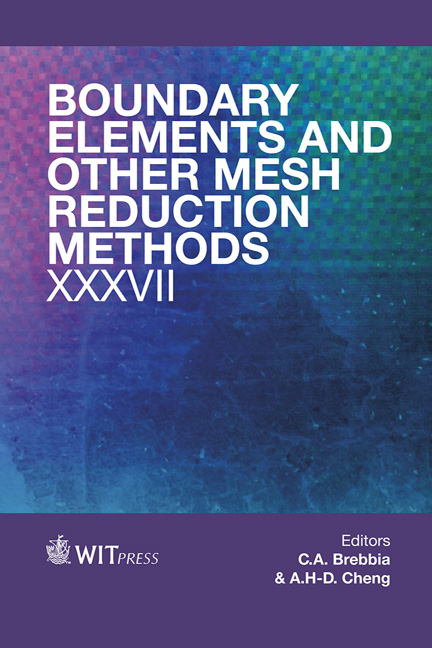On The Modification Of The Method Of Mechanical Quadrature For SIE In Crack Problems Under Step-like Loads
Price
Free (open access)
Transaction
Volume
57
Pages
11
Page Range
203 - 213
Published
2014
Size
362 kb
Paper DOI
10.2495/BE370171
Copyright
WIT Press
Author(s)
A. N. Galybin
Abstract
A number of recently published studies are devoted to modelling of hydraulic fracture propagation in elastic rocks (reservoirs). The modern approaches assume modelling of the hydro-fracture by an open crack (in general curvilinear) loaded by a normal pressure distributed over the central part of the crack which surfaces are stress-free near the crack ends; so-called lag. Such step-like loads generate certain errors in computations if the standard method of mechanical quadrature, MMQ, is used to solve the system of singular integral equations, SIE. To eliminate these errors we suggest an approach that is somewhat similar to the one suggested by Savruk in Two-dimensional problems of elasticity for crack problems (1981) for a crack under concentrated load. The solution is sought as the sum of two solutions. The first solution addresses the discontinuities in the right-hand side of the SIE and corresponds to the case of a rectilinear crack under step-like load. This solution is found in analytical form via singular integrals. The second solution is found numerically by the standard MMQ from the full SIE with a smooth right-hand side obtained after integration of the first solution multiplied by the regular part of the kernel. Therefore the accuracy of the total solution is controlled by its numerical (second) solution. The paper presents a benchmark solution for a SIE with a degenerated regular kernel and a numerical solution for two parallel cracks under step-like loads (as a model of multi-stage hydro-fracture).
Keywords
singular integral equations, discontinuous load, quadrature formulas, hydrofracture





